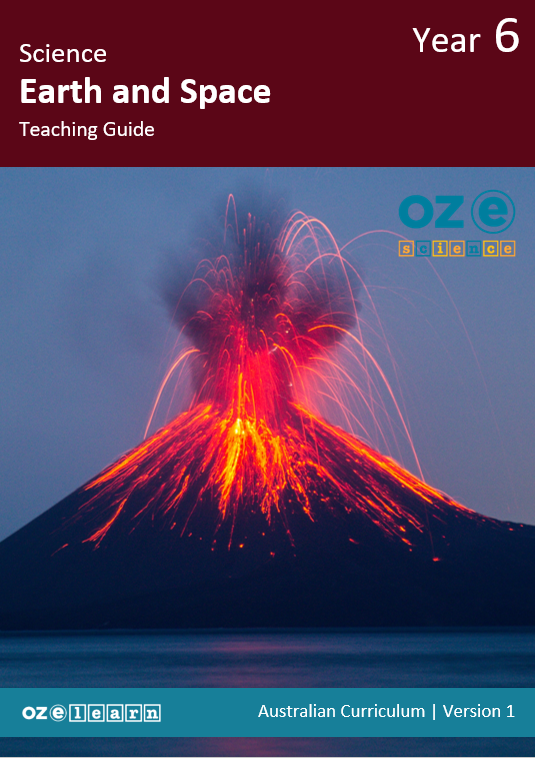Oz-e-science

Teaching resources
Extra resources
In Lessons 1 to 9, students learn about:
- tectonic plates and their role in changing the Earth’s surface
- how mountain ranges and trenches are formed.
- the formation of volcanoes
- the different types of volcanoes
- earthquakes and where they occur
- tsunamis and how they affect the Earth’s surface
- how to predict and track volcanic activities that have affected the Earth’s surface
- examples and causes of extreme weather events and their effects on the Earth’s surface
- research and create a presentation to share your findings
- Describe Earth’s tectonic plates.
- Explain what happens at plate boundaries Identify a plate boundary as convergent,
- divergent or transform.
- Describe how mountain ranges form at convergent plate boundaries.
- Explain how trenches form at oceanic plate boundaries.
- Explain how volcanoes form.
- Describe the basic structure of a volcano.
- Explain how volcanoes affect the Earth’s surface.
- Observe how viscosity of a volcano’s lava affect its shape.
- Classify different types of volcanoes.
- Identify signs that a volcano is about to erupt.
- Explain how volcanoes affect the Earth’s surface.
- Analyse data to determine volcanic activities.
- Describe how earthquakes form.
- Explain how earthquakes affect the Earth’s surface.
- Sequence the progression of an earthquake.
- Describe how tsunamis form.
- Explain how tsunamis affect the Earth’s surface.
- Represent how different natural events result in tsunamis.
- Predict the activity of your volcano.
- Record information of your volcano.
- Identify where weather activities occur in the atmosphere.
- Explain what extreme weather conditions means.
- Classify extreme weather conditions.
- Research information on your volcano.
- Evaluate your findings about volcanoes.
- Plan your presentation.
- Communicate the findings from your investigation.
Progress Tests
Progress tests are conducted after every second lesson, allowing teachers to monitor student understanding of the concepts taught over the past two lessons and to identify where reteaching is needed. The Teaching Guide contains the testing questions, and the Student Workbook has a section where students write their answers and score themselves.
Structured Research Activity
The Structured Research Activity (SRA) for this unit is: Students will research and create a presentation to share their findings on volcanoes. The SRA takes place over two lessons so students can apply the Science Understanding and Science Inquiry Skills covered in the unit. Teachers use the Guide to Making Judgements, which is included in the Teaching Guide, to mark the SRA.
End-of-Unit Assessment
The last lesson is the end-of-unit assessment which has a variety of question formats (e.g. label the diagram, circle the correct answer) to assess student mastery of content from the unit. The end-of-unit assessment is in the Teaching Guide. Teachers copy the assessment and distribute to students at testing time.
Progress tests are conducted after every second lesson, allowing teachers to monitor student understanding of the concepts taught over the past two lessons and to identify where reteaching is needed. The Teaching Guide contains the testing questions, and the Student Workbook has a section where students write their answers and score themselves.
Structured Research Activity
The Structured Research Activity (SRA) for this unit is: Students will research and create a presentation to share their findings on volcanoes. The SRA takes place over two lessons so students can apply the Science Understanding and Science Inquiry Skills covered in the unit. Teachers use the Guide to Making Judgements, which is included in the Teaching Guide, to mark the SRA.
End-of-Unit Assessment
The last lesson is the end-of-unit assessment which has a variety of question formats (e.g. label the diagram, circle the correct answer) to assess student mastery of content from the unit. The end-of-unit assessment is in the Teaching Guide. Teachers copy the assessment and distribute to students at testing time.

